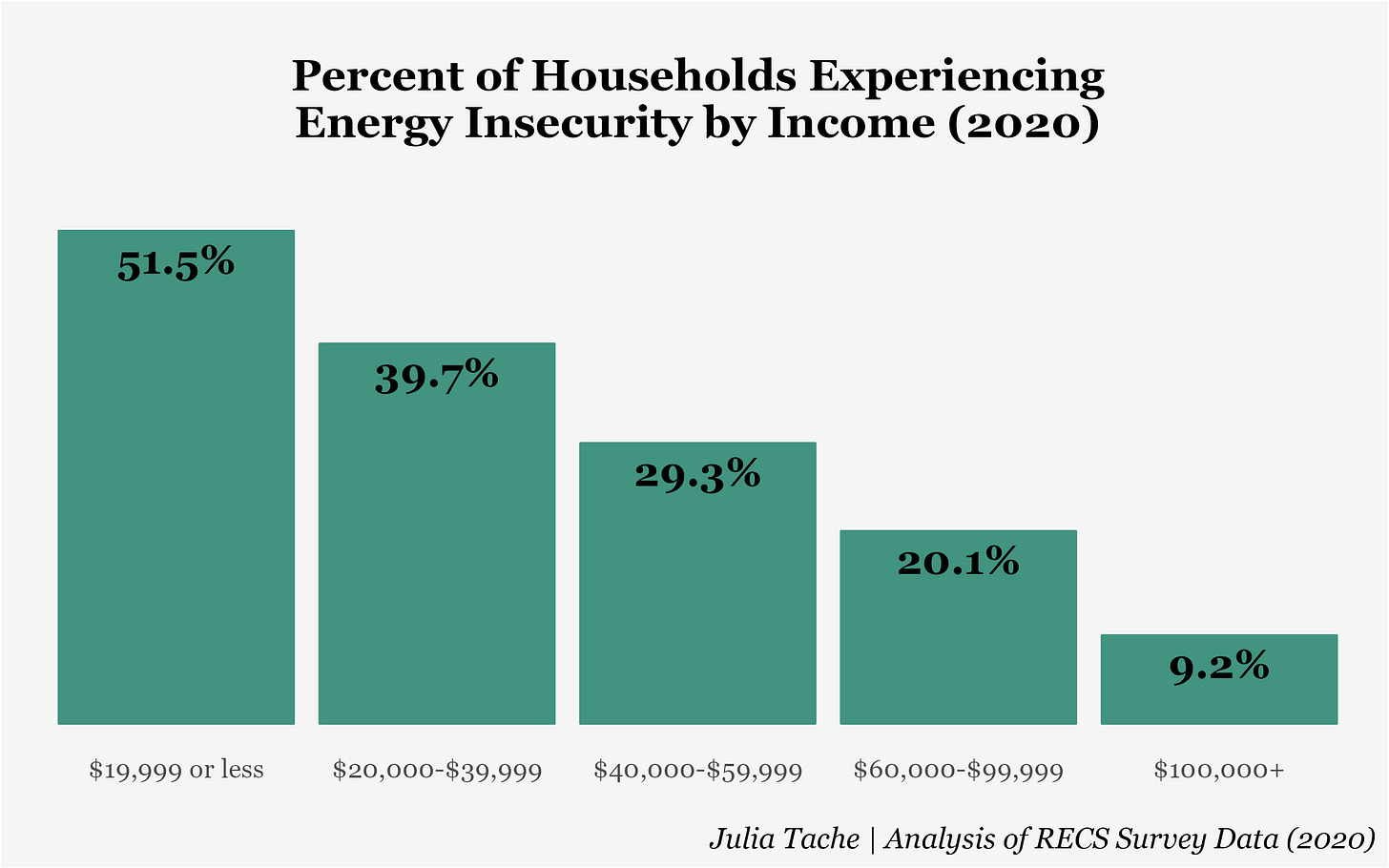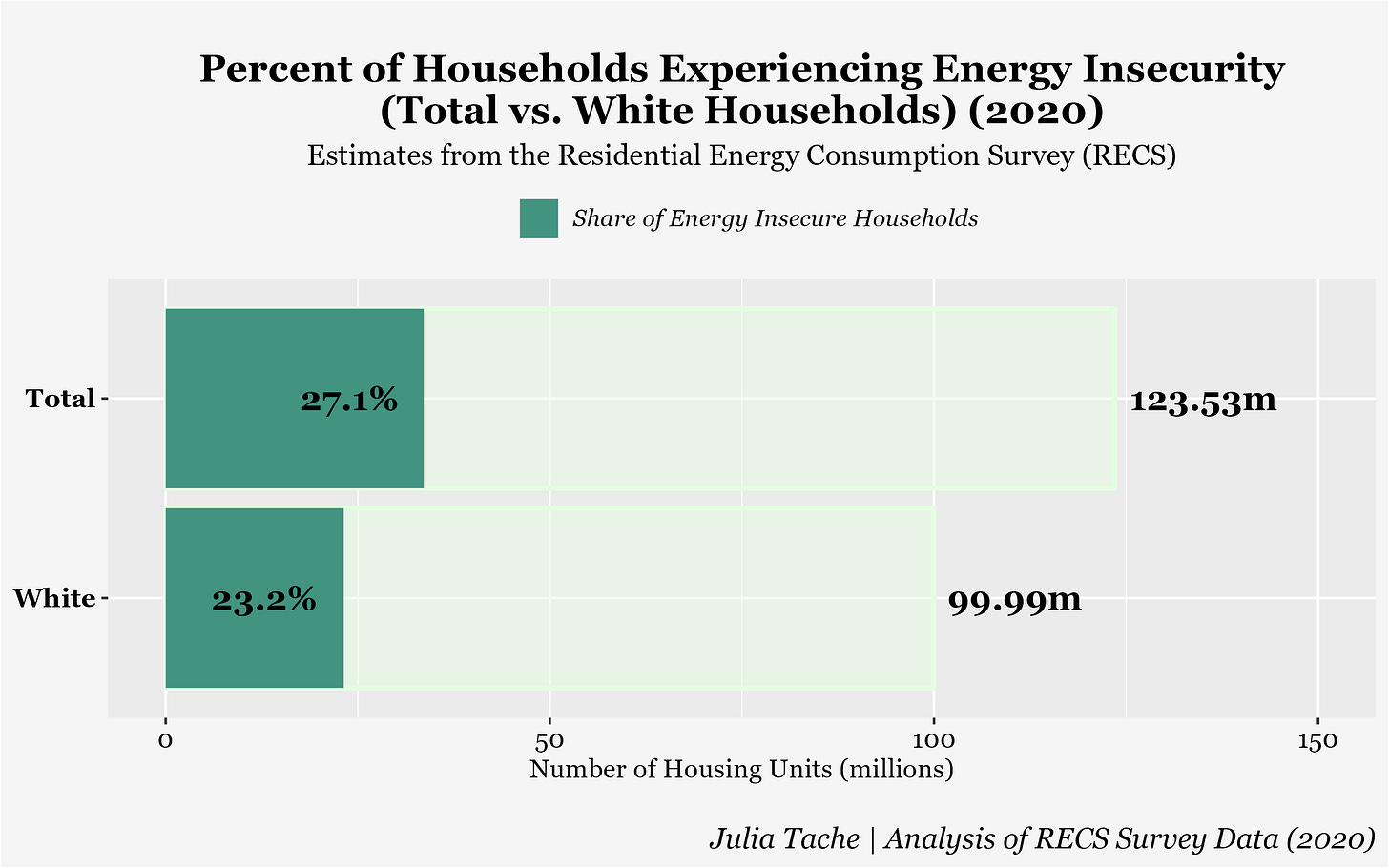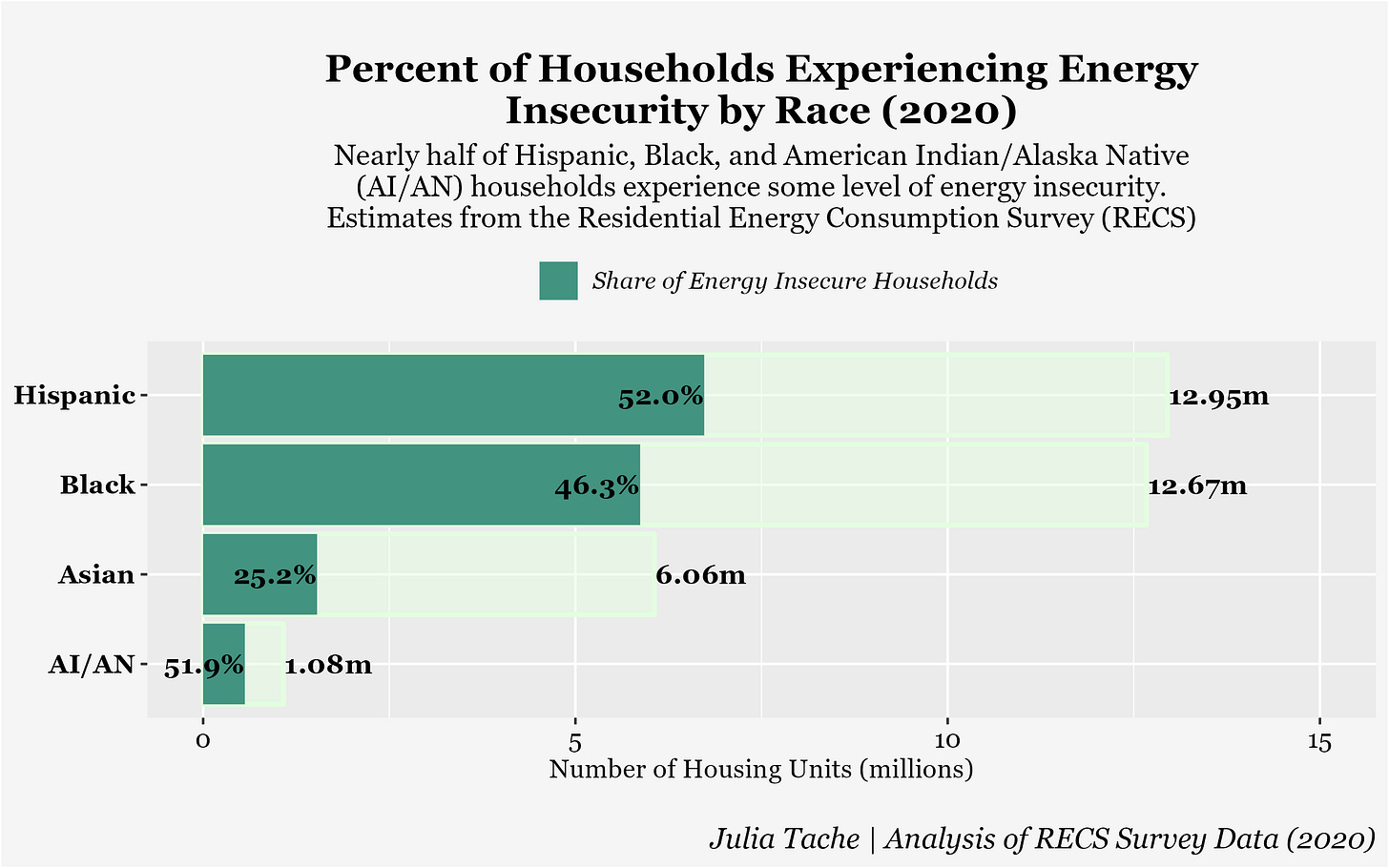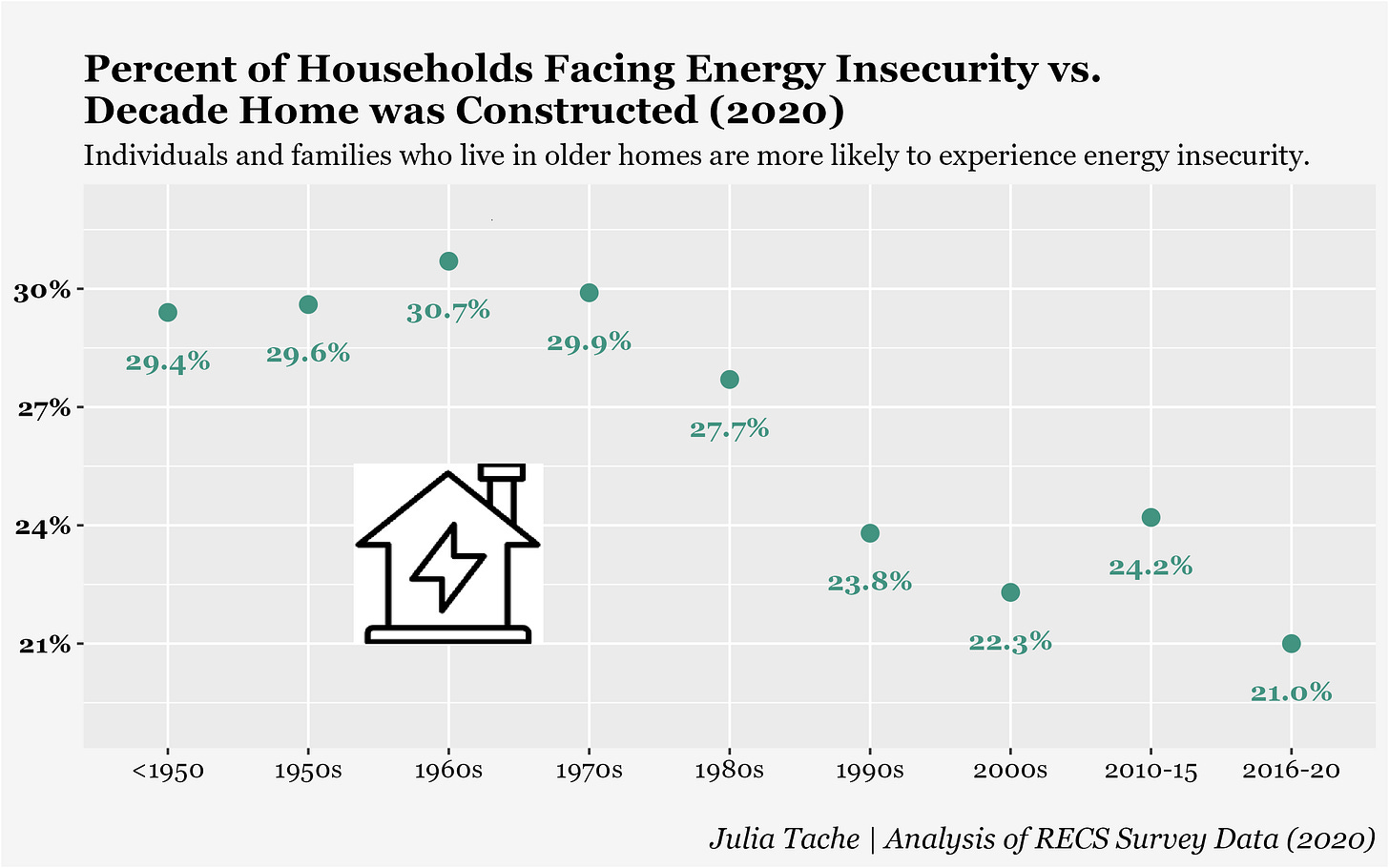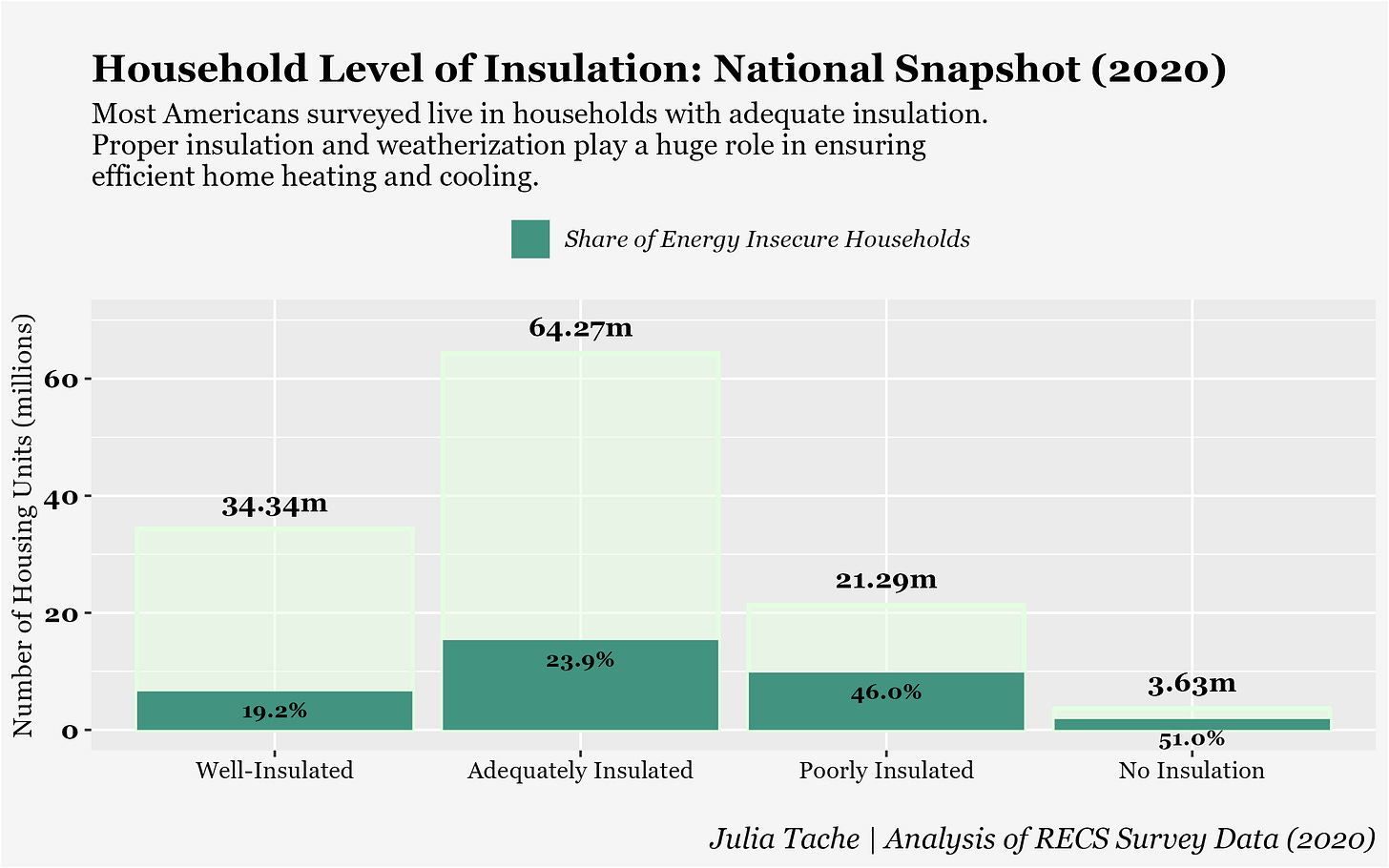#QuickByte: Home Energy Insecurity
October is Energy Awareness Month, and this upcoming Wednesday, October 30th is National Weatherization Day. Both of these observances are meant to pay special attention to the unique challenges faced by people in underinvested communities with regard to energy efficiency.
Costly and unstable household heating and cooling has major implications for economic stability, as well as health and health equity. More than 30 million U.S. households are energy insecure, meaning that they are unable to adequately meet home energy needs. According to the American Council for an Energy Efficient Economy, a household with a high energy burden is often defined as one spending more than 6% of gross income on home energy. The average low-income household allocates an upward of 8.1% of earnings to energy expenses.
For this week’s post, I will be revisiting a series of graphs that explore data from the 2020 Residential Energy Consumption Survey (RECS) on energy insecurity and the importance of efficiency and weatherization measures. RECS provides a snapshot on household energy usage and is collected every five years by the U.S. Energy Information Administration.
According to RECS data, over half of households making less than $20,000 a year experienced some form of energy insecurity. As annual income level increases, the chance of experiencing an energy disruption decreases. Please note that energy insecurity as defined by RECS is different than energy burden: households report on a variety of issues that indicate insecurity, such as reducing or forgoing food or medicine to pay for energy costs, receiving a disconnection notice, and being unable to use heating or cooling equipment.
Over a quarter of households in the U.S. have dealt with energy insecurity, and subsetting by race reveals how disparately different groups are affected. Hispanic, Black, and American Indian/Alaskan Native households are by far the most likely to be energy insecure, pushing members of these households to reduce bills in unsafe or unhealthy ways and making it more likely for them to have their utilities shut off.
People with low incomes and people of color are often compelled to live in areas with cheaper costs of living, which in turn may exacerbate problems related to energy insecurity. Homes in these areas are likely to be older, drafty, and lack the equipment needed to properly heat and cool their interiors. Compared to people living in more newly constructed homes, those living in older homes were more likely to report difficulty in affording energy bills and/or trouble with equipment by a nearly 10% margin.
Nearly half of households with poor or no insulation experience some form of energy insecurity. Most Americans live in homes that are adequately insulated, which means that nearly a quarter of those households have had issues with home heating and cooling. Proper insulation and weatherization make a huge difference in maintaining healthy indoor temperatures and keeping bills affordable.
There are a myriad of other factors that increase a household’s risk of energy vulnerability and disconnection. RECS respondents with children and renters also reported more instances of energy insecurity. Mobile home occupants are twice as likely to be disconnected than people living in any other housing type.
For a while, electricity price inflation was outpacing increases to the overall consumer price index, and more than 20% of households fell behind on energy bills in 2022. Fuel price increases due to supply chain disruptions and other global issues can be offset through decarbonization and other steps to reduce reliance on oil and gas. Low-income households still face certain barriers to efficiency, though, as the costs of retrofitting homes, upgrading appliances, installing solar panels, and other interventions are often prohibitively expensive. Administrative burdens and having to wait for payment through federal support may make participation in clean energy programs difficult.
A long-standing program that directly addresses weatherization and efficiency issues is the Weatherization Assistance Program (WAP) distributed by the Department of Energy (DOE). This program services approximately 35,000 homes per year, helping households save an average $372 or more annually on energy costs. The Inflation Reduction Act (IRA) of 2021 represented a legislative milestone in advancing clean energy, electrification, and decarbonization. Through tax credits and rebates, homeowners and contractors are financially supported in upgrading residences and seeking out new sources of energy. However, the distribution of IRA tax credits for these upgrades has not been particularly equitable. Home improvement rebates targeted toward low- to moderate-income households are currently being rolled out by states, with the DOE estimating these incentives to save households up to $1 billion annually.
Time will tell what the impact of these expansions for efficiency and weatherization upgrades will bring. Along with concerted efforts to move toward renewable fuel sources, widespread home improvements are another key element of comprehensive climate policy. Improved efficiency not only helps reduce energy usage, but also relieves the undue financial burden of high energy costs faced by millions.


